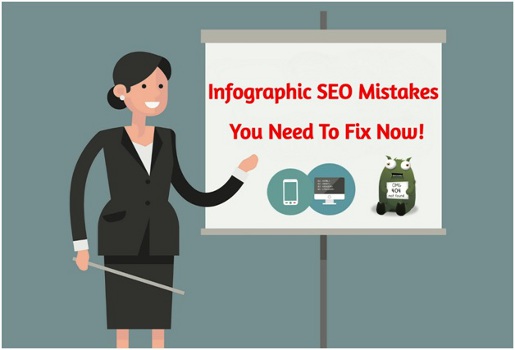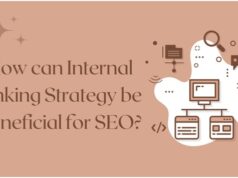SEO plays an important part in your online business’ growth. Maybe you have started a company that offers professional dissertation writers, and you are struggling to make your website stand out. There will be hundreds of companies doing a similar thing, no matter what your company does. So how do you stand out, driving traffic to your specific website? The response to that is simple: SEO. Optimization of the search engine is a dynamic problem that can either make you or break it in terms of exposure and traffic inflow to your site. Through fine-tuning the SEO element you will experience a huge increase in traffic to the website – but at the same time even simple SEO errors damage the website a lot.


1. Low site speed
You want Google to rank your site in top search results, so that users can find it easily. In addition, Google needs users to be satisfied – so that is the key reason why it wanted to include site speed in the search ranking algorithms.
There are many things that can affect your site’s speed, like a badly written code, loads of useless plugins or heavy images. While you might not even know it, some of these things in terms of results will pull your site down.
The first step you need to take would be to analyse your site using Google’s PageSpeed Insights. It’s an immensely useful tool that detects your site’s biggest problems and provides suggestions on how to fix them.
Another thing you can do is ask a reputable SEO company for an SEO audit to get a detailed review of the current problems and advice on how to fix them.
The next steps depend upon the outcome of the audit. If there are a few minor problems you can fix them yourself. However, if the problem is more serious you may need to seek support.
For example, in e-commerce, hiring developers who work with the specific e-commerce platform is a common practice, particularly if it’s a complex one like Magento. In this scenario, store owners would need a professional developer from Magento 2 who can get the store back on track and speed it up to avoid sales losing.
2. Poor site structure
A well-organized structure of the site is crucial. It helps users navigate the site easily, which in turn leads to a better user experience. It also allows search bots to “comprehend” your site, see which content is the most relevant and index the pages accordingly.
So, what makes a good site structure? It implies:
- Clear Interface (easy navigation)
- Proper categorization
- Internal Linking
- No duplicate pages
- Breadcrumbs (recommended)
Sadly, several websites have complicated and confusing navigation, broken links, redundant content and other SEO problems that prevent Google from indexing properly.
Think of a good website structure as a pyramid where the homepage is a cornerstone, and then the user progressively moves into categories, subcategories, etc. As well, check out this guide on setting up a site structure with a detailed explanation of each step.
Another thing to consider is a sitemap with XML. The XML sitemap is basically a list of your site’s most important pages, and helps Google view and index those pages.
Creating an XML sitemap is strongly recommended for any web site. To make this visible to Google, add your map to the Google Search Console (a section called “Sitemaps”).
3. Broken links
You might not even recall a newsletter you sent a couple of months ago to your customers but they may always click on the links in it. And these connections will well be broken and lead to a 404 page.
There are a couple of reasons for error 404. The user that typing the URL incorrectly, deleting the page or changing a site structure. The broken links can also be internal as well as external, implying that the other site may have a broken connection that would theoretically lead to your site.
Why do you keep an eye on all the connections and make sure that none of them leads to a 404 error?
There are several resources available to help you track your ties and recognise which ones are broken.
Firstly, there are crawl tools that evaluate the site’s internal ties and comment on the broken ones. Then, as you may have guessed, there are backlink tools that examine the external sources that could include a broken link to your web. The 404 error can also be tracked with Google Analytics.
Broken bonds are a serious problem. They hurt your site ranking and dramatically decrease user experience. But before you hurry to fix them, estimate how many users (or conversions) you lose due to error 404 and prioritize your tasks accordingly.
4. Non-optimized images
Once people hear SEO they think of keywords, links, XML sitemaps and other “scientific” stuff right away. What many website owners appear to forget is the image optimisation problem, which is sometimes ignored.
Photos are an integral part of the optimisation plan for your SEO. They help you get known about your site and attract users to it. After all, people do a lot of searching for photos and you want your website to appear in the search results.
An e-commerce store is a prime example of a site requiring proper image optimisation. Such a store wants to be recognized among the competition with a variety of product images and let customers know that it has the right products.
Naming the image
Each image needs an informative name filled with keywords, so that Google can understand what the image is about.
Describe its key features, and think about what keywords users might be looking for. In the description of the image, then add one or two keywords, so it looks like “white-flat-shoes-women.jpg.” But don’t just try to fill in the name of the picture with keywords-make the name concise and useful.
Alt attributes
You can see the text of the alt attribute if the browser does not display the image, and instead displays text.
Alt attributes help both users and search bots understand the context of the hidden image, so you need to write these attributes on your site for every image. Alt attributes have to include keywords and define the image simply and neatly in the same way as with the image name.
Also, keep an eye on the size and types of the images. Certain types of images such as JPG or PNG are suitable for different purposes and the size of the image can affect the load speed of the site.
5. Non-optimized text
Your site’s content serves a few crucial functions: it informs users about your products / services, while impacting your ranking.
If the text doesn’t have enough keywords, isn’t unique or relevant, doesn’t have any links and doesn’t bring value to the user, it can hurt your ranking seriously. The thing is, the pages are judged by Google by their importance to consumers. If a bot sees high bounce levels or detects copy-pasted content on your sites, it can reduce or even remove your site from the results of the search.
One of the biggest SEO errors many e-commerce marketers make with their text is leaving the manufacturer’s product description untouched. That means, they copy and paste it without altering even the slightest. Yet, think about it. How many stores do you think sell the same products and copy-paste the same text? Obviously, Google will rank more “reliable” sites than yours when it sees multiple identical texts.
Try to write a unique summary of product / service, and create a unique copy on your site. Uniqueness will define your brand, even if your brand is based upon professional dissertation help writers. Your uniqueness will set you apart and help google elevate your website.









